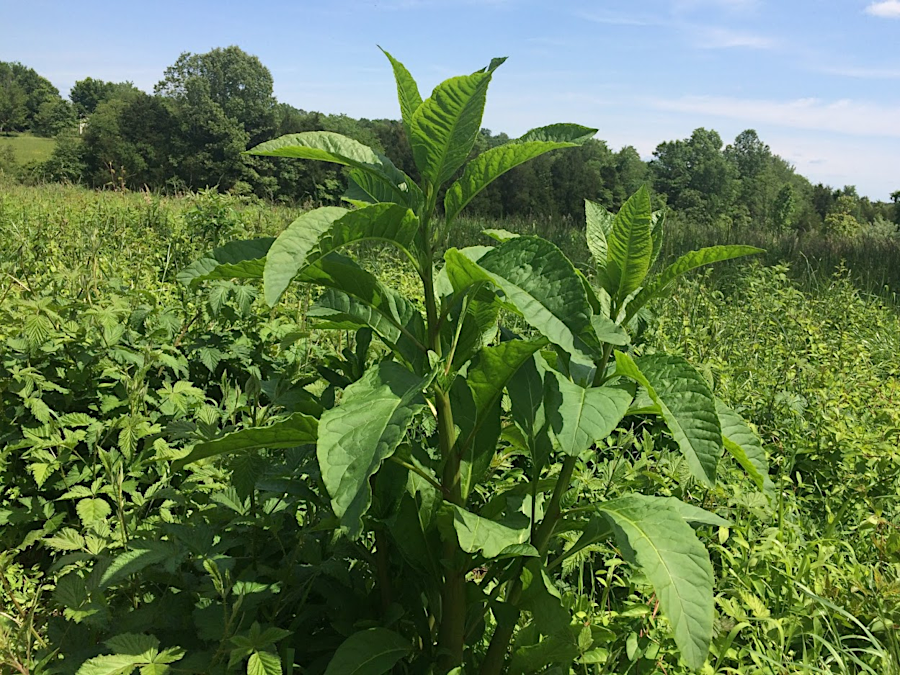
pokeweed is an early successional species

pokeweed is an early successional species
If left undisturbed, nearly all the land in Virginia will end up covered by a forest with shrubs and "forbs" underneath. For about the last 8,000 years since the ice sheets retreated, trees growing together in forests have been well adapted to Virginia's temperature and rainfall patterns. Only a few rocky outcrops, shale barrens, and sandy dune areas have soils that are naturally too thin to support trees.
Different species grow on hillsides with different slopes and elevation, and especially different aspects. Hillsides with a south-facing aspect will be much hotter in August, and pines thrive on such sites in the mountains. Hillsides with a north-facing aspect are colder in the winter. Forests on north-facing slopes are typically composed of oaks and hickories, with hemlocks and maples near the streams.
Soil moisture is a major factor in shaping the species within a forest. Chestnut oaks grow well on dry ridgetops, while sycamores prefer "wet feet" and grow best on floodplains.
The concept of vegetation evolving to a "climax forest" assumes that environmental conditions are consistent. In theory, maples and sycamores occupy stream valleys while oaks, pines, and hickories cover the ridges. Mature trees over 100' high will develop a closed canopy, intercepting much of the light from the sun before it reaches the ground.
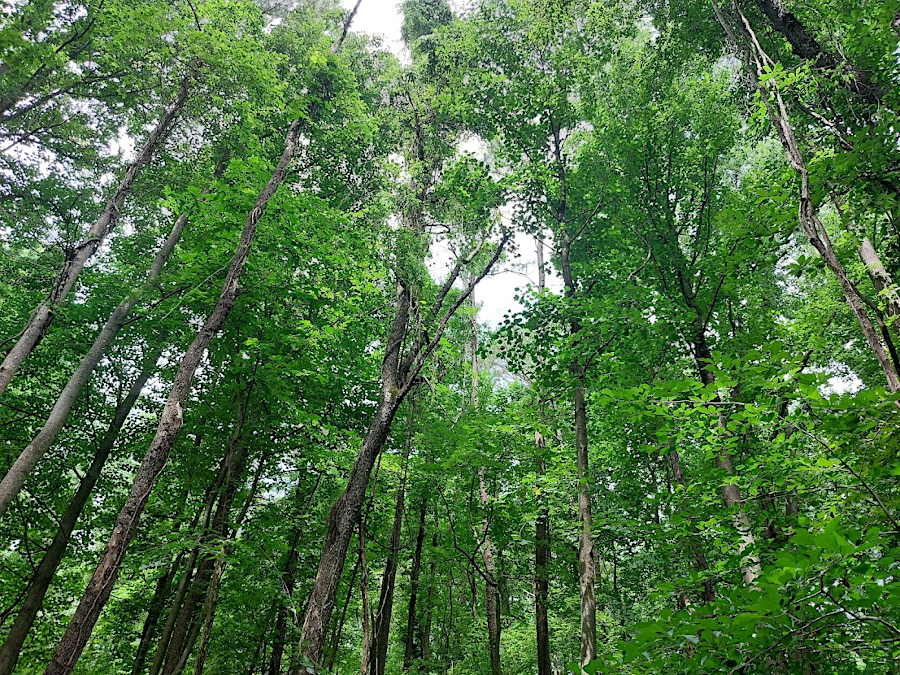
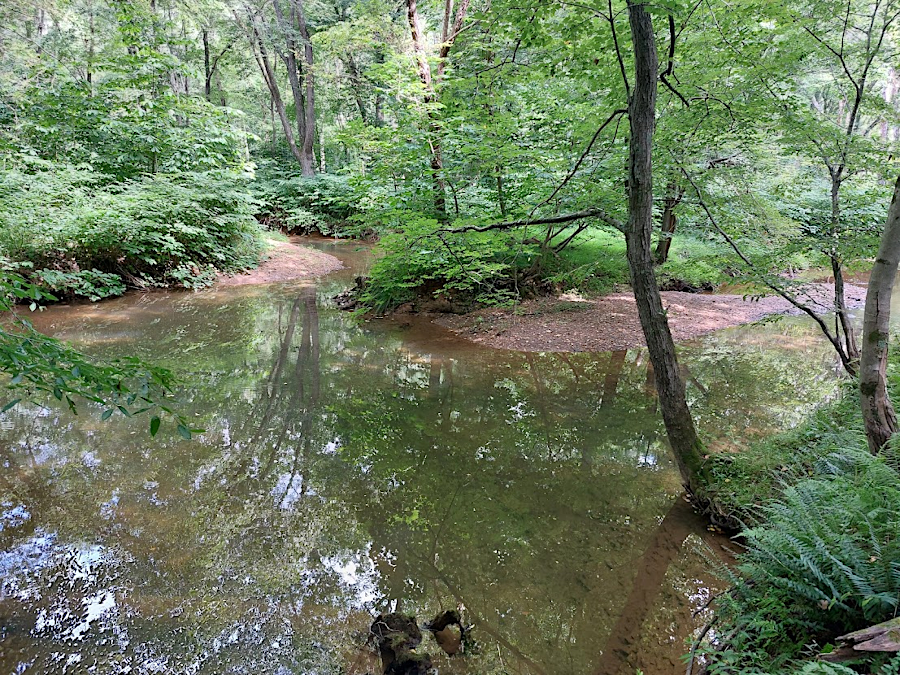
after nearly a century without logging, the forest canopy at Fraser Preserve in Fairfax County has only occasional gaps allowing sunlight to reach the ground directly
Spring ephemerals must complete much of their life cycle on the forest floor before the leaves emerge in April and block the essential sunlight. During the summer, only shade-tolerant species which grow under low-light conditions will develop on the ground, or as a sub-story below the mature trees. Ferns thrive in moist stream valleys with low light, out-competing other species that need more sunlight for photosynthesis.
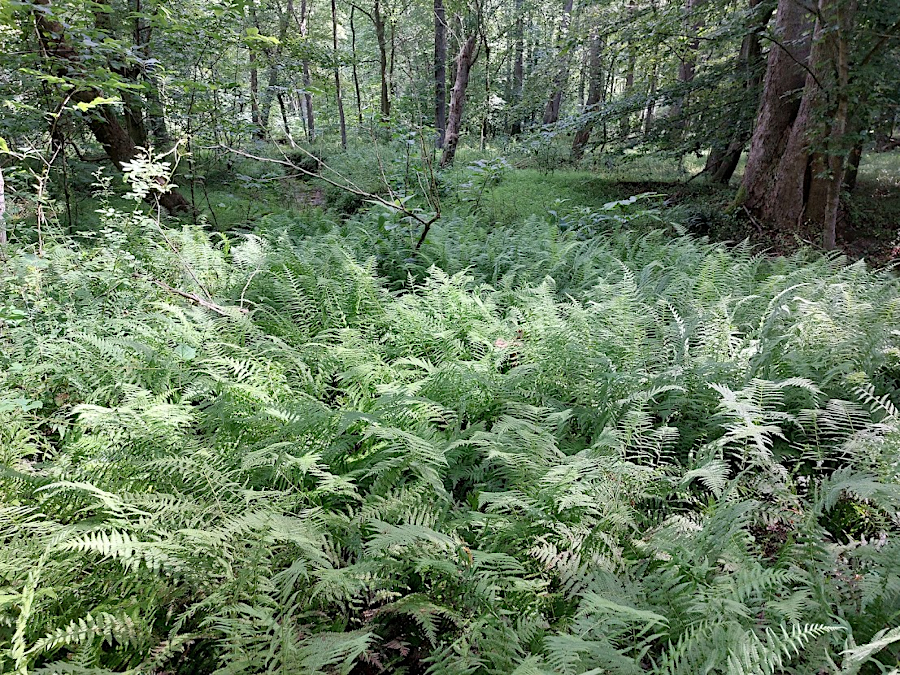
New York Fern (Amoauropelta noveboracensis) covers the ground beneath a closed canopy at Fraser Preserve
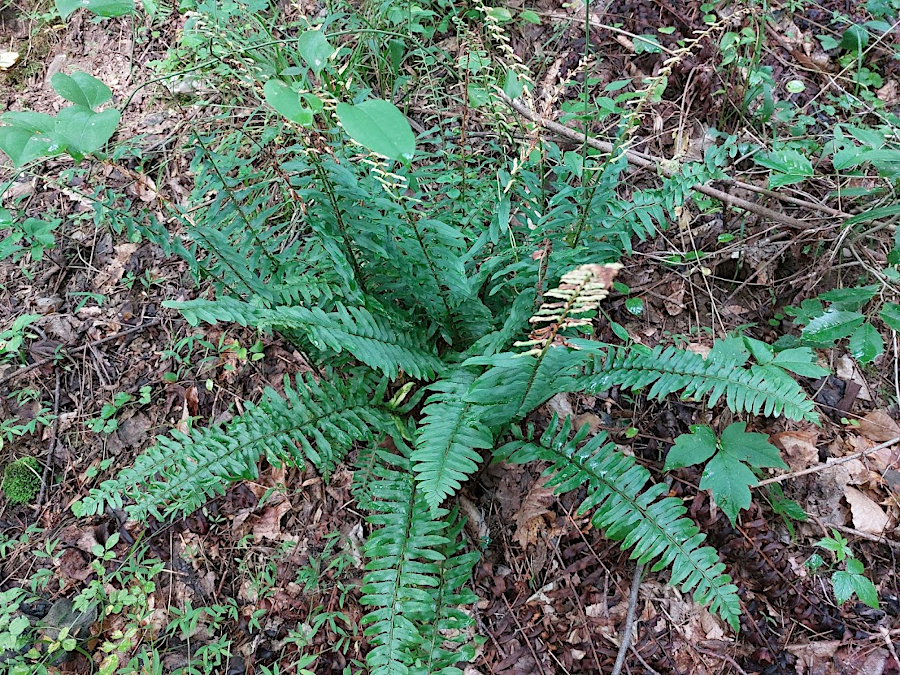
the Christmas Fern (Polystichum acrostichoides) stays green throughout the year, and can photosynthesize on warm days when there are no leaves on the trees
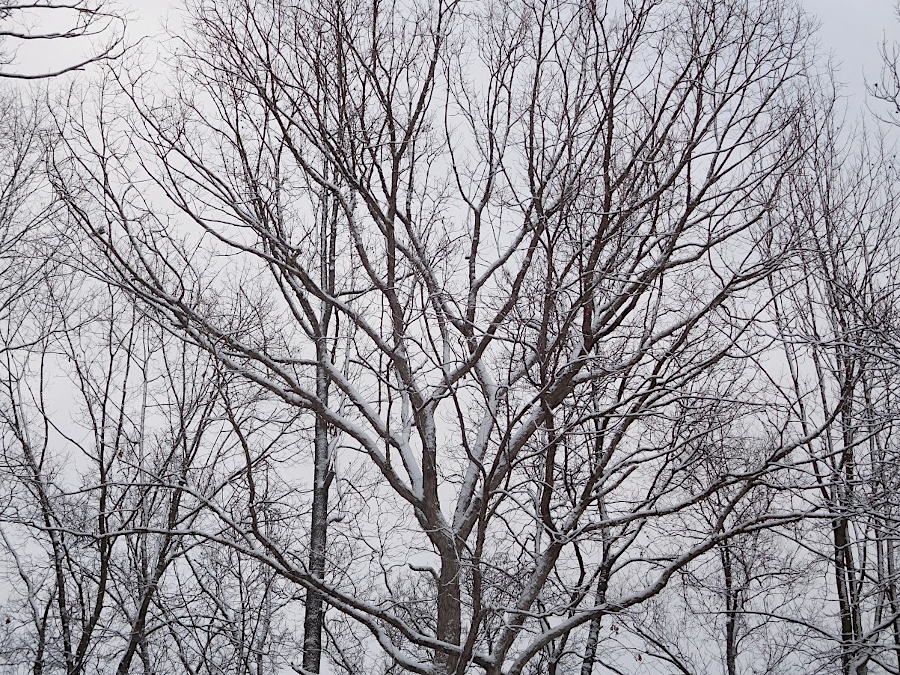
Spring ephemerals grow underneath deciduous trees, which allow light to reach the forest floor in February-April
In reality, storms and lightning-caused fires always have cleared patches and occasionally wide swaths of natural forests. So have humans, who arrived in Virginia before today's forests developed. When the first European colonists arrived about 500 years ago, Native Americans had been setting fires so regularly in the Shenandoah Valley that it was a savannah rather than a forest.
Agriculture and later suburban development transformed the landscape. Starting in the 1600's, trees were cut to create tobacco, corn, wheat, and hemp fields as well as to provide wood for building materials, fences, and fuel. If there is any "old growth" remaining, any virgin timber never cut for human use, it is probably located deep within the swamps of the Blackwater, Nottoway, or Meherrin rivers.
Though nearly every acre of Virginia has been cut over, today forests cover 62% of Virginia (15.7 million acres). The percentage in 1940 was 58%, but the trend shifted around the start of the 21st Century. Suburban/urban development and land clearing for agriculture are the primary reasons that forested acres are disappearing.1
Natural reforestation exceeded land clearing after the Great Depression, as mechanization of agriculture spread and Virginia farmers could not compete with larger farms in the Midwestern states. Corn and wheat could be shipped to Virginia and sold at prices lower than what local farmers could match. During World War II, labor was scarce because so many men served in the military. After World War II, the children of farm workers moved to cities. The scarcity of labor helped to increase the cost of producing agricultural products in Virginia's rural areas. Farmers stopped plowing and grazing some of their acreage, trees grew up in old fields, and the percentage of forested land increased.
The process of old field plant succession is well-understood. If the field had been used for row crops, the first species to grow the following summer will be weeds. Some seeds from the previous year's crop may still be in the soil, but if they germinate they rarely thrive. Plants such as tobacco, corn, wheat, and soybeans do not "go native" and replace themselves in perpetuity.
The genetics of the seeds planted by farmers were selected to create plants that required a farmer to clear weeds and minimize competition. After a field is abandoned, seeds of native species and recently-introduced non-native species almost always out-compete any remnant crop seeds. Wind and wildlife bring seeds from nearby plants into old fields. Breezes will blow milkweed and wildflower seeds into a field. Birds, raccoons, and other animals will eat berries on red cedar, black cherry and hackberry plants, while racoons will bring seeds from persimmon trees. Such "poop plants" get animals to consume fruits and berries that surround seeds, and then the animals excrete the seeds in a new location.
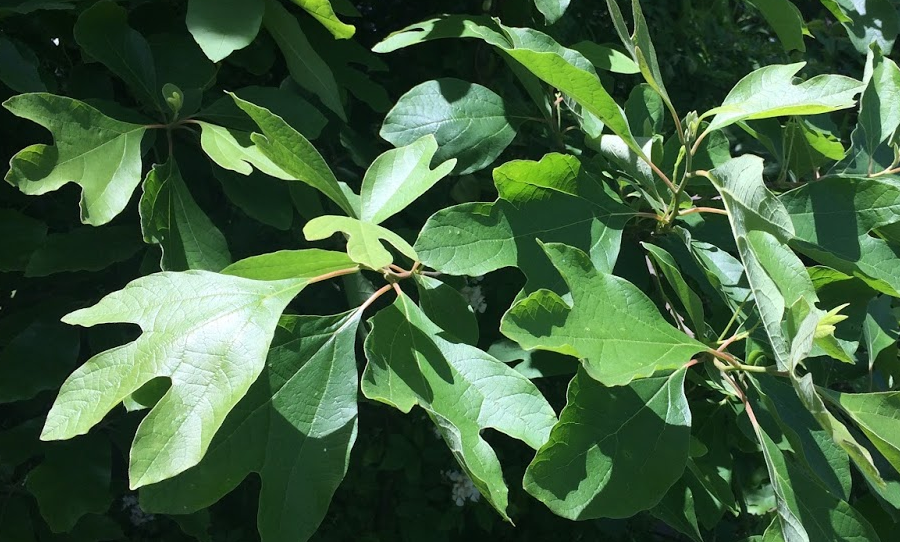
sassafras trees, with their distinctive leaf shapes, are quick to grow in open fields once farmers quit mowing
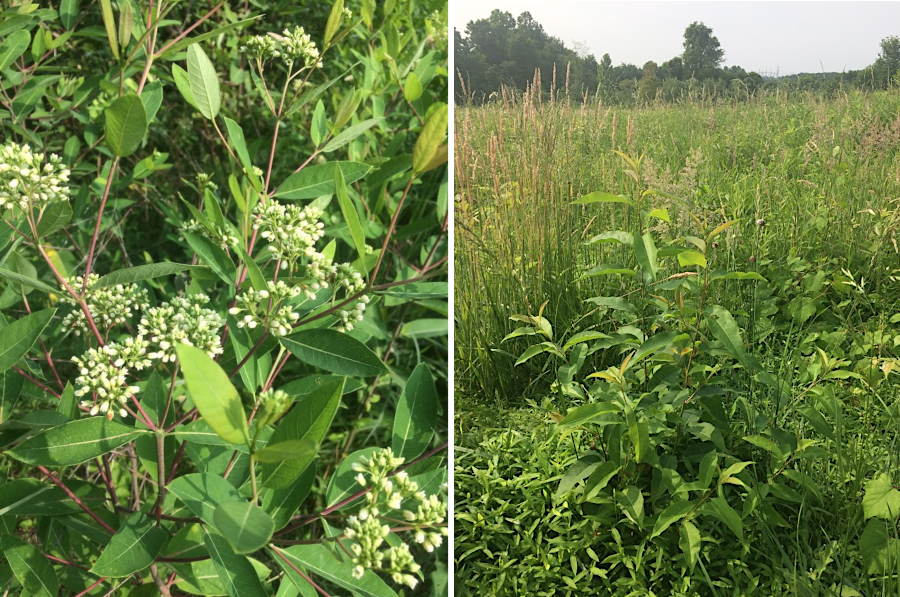
dogbane (left) and wild cherry (right) are some of the first species to grow in old fields
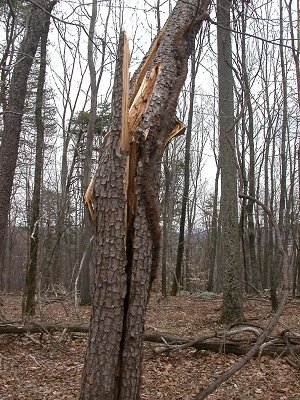
trees are not immortal - they are damaged naturally in storms, or replaced by other trees
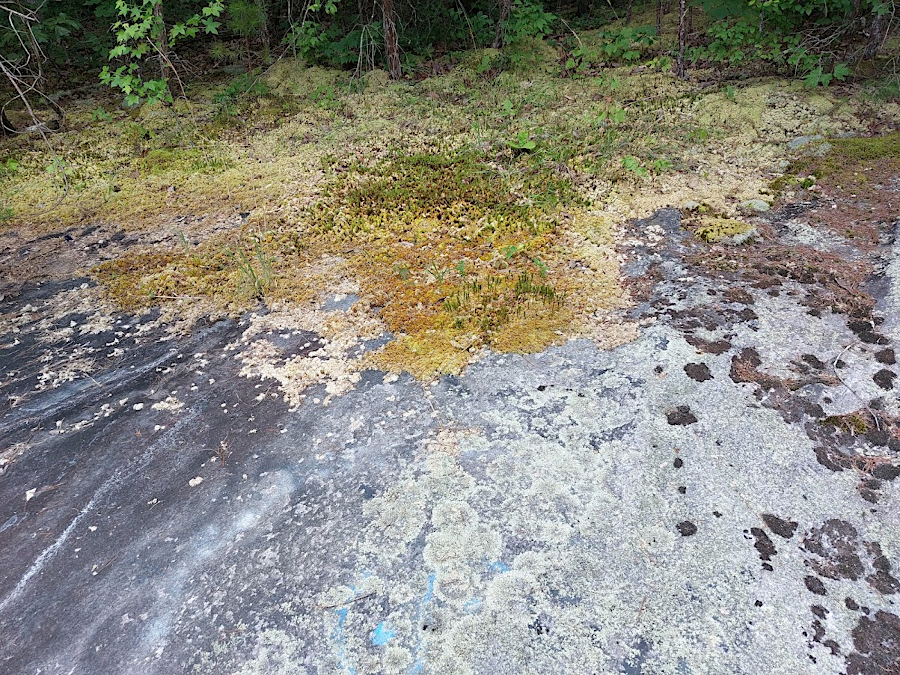
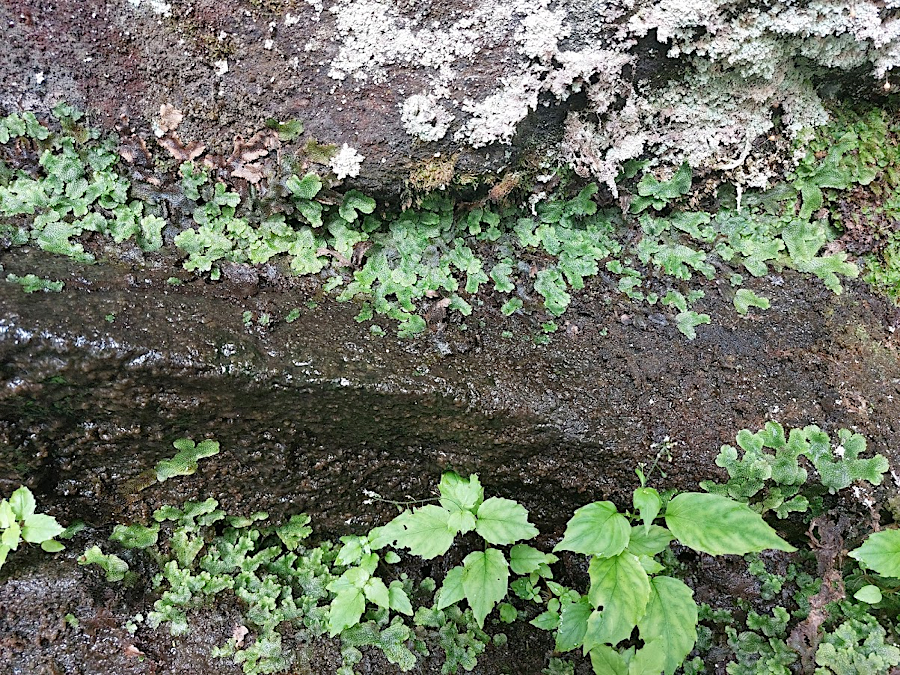
in primary succession, bare rock is gradually covered by lichens, mosses, and liverworts
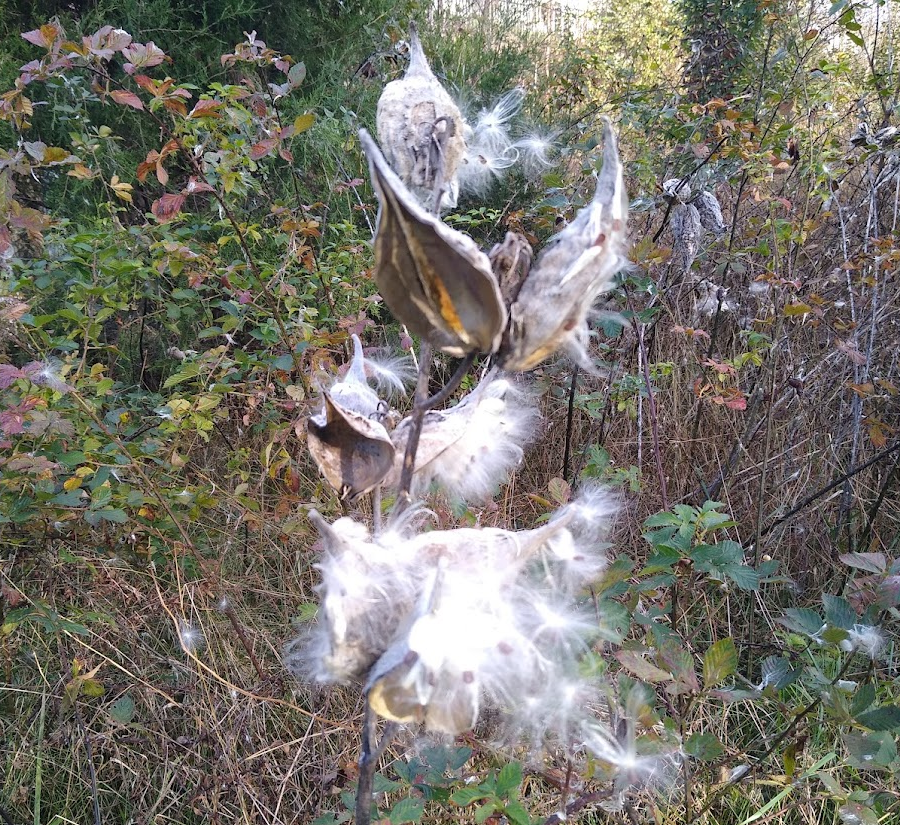
milkweed plants distribute seeds quickly through the wind
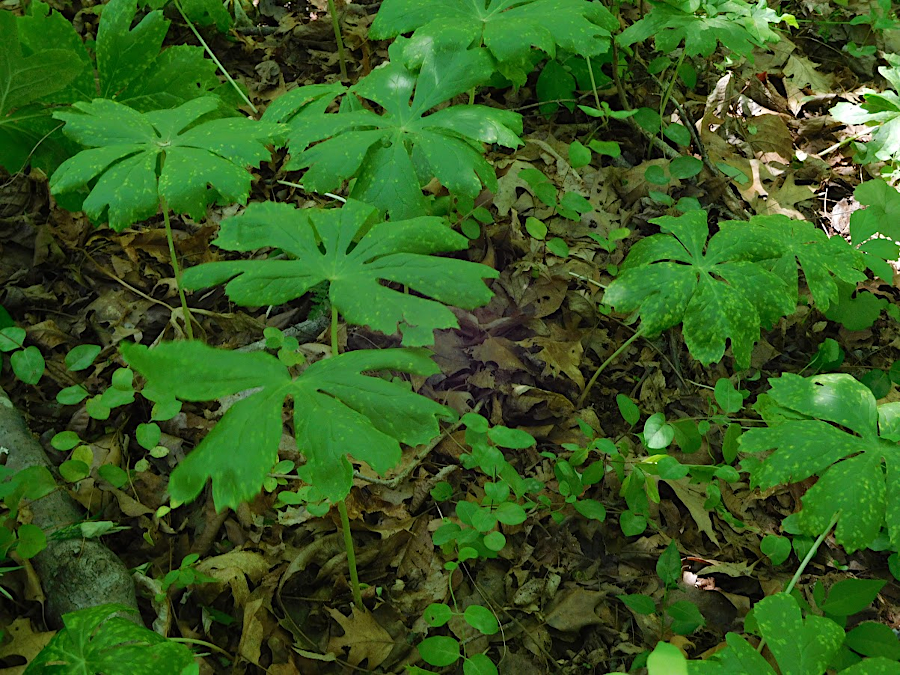
mayapples (Podophyllum peltatum) grow in moist areas with shade, not in dry open fields wih bright sunlight